Although our field season has not yet concluded, spring is certainly over and with it, most of our bird census activities within DOPPS (BirdLife Slovenia). In summer we'll be still busy with a research on the Short-toed Eagle (searching for nests, monitoring hunting behaviour and GPS-tagging) that we are carrying out within the Interreg (Italy-Slovenia) project
Kras4us. More on that hopefully in the future.
But at the moment it's time for a short review of the season behind us - our yearly minimum to keep this blog still alive! As usual we've spent most of our working and free time in SW Slovenia between the Karst, the coast and Notranjska region. The Kras4us project has kept us busy for most of the spring, as we've been trying to locate as many Short-toed Eagle's territories as possible within the SPA (Natura 2000 area) Kras. We managed to find 4 nests so far and at present we are following at least 4 more presumed territories that we intend to discover by the end of summer. So in this blog you will find quite a lot of Short-toed Eagle material, apologies for the repetitivity! The only "deviation" from our usual geographical circuit this year was a short trip to the Mura river valley and Goričko region in the extreme northeastern corner of Slovenia.
 |
| Raven Corvus corax nesting in the limestone cliff cca 350 metres from our home in the Karst in March. |
 |
| Middle Spotted Woodpecker Dendrocoptes medius, Karst, March. Unfortunately this year we didn't have much time to spend on woodpecker monitoring, however Middle Spots have been accompanying us during many field activities. |
 |
| Ural Owl Strix uralensis, Karst, March. A traditional encounter on our Forest Bird Index census transect. |
 |
| Me (Domen) and my colleague Davide giving a talk about the Short-toed Eagle and bird responses to wildfire during a public meeting within the Kras4us project at Cerje (Karst) in March. |
 |
| Proudly using our Slovene "Collins" while guiding a birding walk in the Karst's post-fire areas in March. |
 |
| Short-toed Eagle Circaetus gallicus, Divača, March. One of the first returning birds in late March. |
 |
| Black-eared Wheatear Oenanthe hispanica (melanoleuca), Lokvica, Karst, April. An annual but very scarce rarity in Slovenia, found by chance at the end of a group census of Short-toed Eagle. |
 |
| Rock Bunting Emberiza cia in a post-fire pine forest in the Karst, March. |
 |
| Farmland birding in the Karst, April. |
 |
| Dotterel Charadrius morinellus, Karst edge, April. Two of a party of three that surprised me on my Farmland Bird Index transect! |
 |
| River Mura in the extreme NE of Slovenia during a visit in late April. |
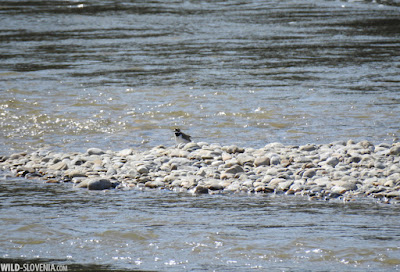 |
| Little Ringed Plover Charadrius dubius on a natural gravel island on the river Mura, April. |
 |
| Collared Flycatcher Ficedula albicollis, Mura river, April. An abundant breeder in the alluvial forests along the Mura. |
 |
| Giant Peacock Moth Saturnia pyri, river Mura, April. |
 |
| An oxbow with old Beaver Castor fiber signs along the river Mura, April. |
 |
| Father and son birding in the "Amazon of Europe" - by the river Mura (part of the Mura-Drava-Donava 5-state Biosphere Reserve) |
 |
| Hoopoe Upupa epops with Mole Cricket Gryllotalpa gryllotalpa in Goričko (NE Slovenia), April. |
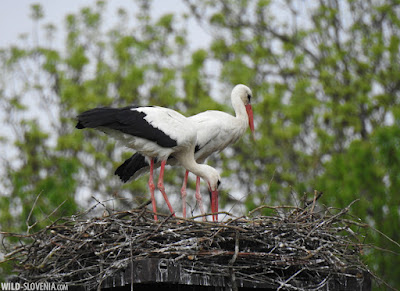 |
| White Storks Ciconia ciconia, Goričko (NE Slovenia), April. |
 |
| Black-winged Stilt Himantopus himantopus incubating at Škocjanski zatok NR, May. |
 |
| Grey Heron Ardea cinerea, Škocjanski zatok NR, May. A new breeding species this year at the reserve and the first breeding for the Slovene coastal area. |
 |
| Wetland trio: Little Bittern Ixobrychus minutus, Great Reed Warbler Acrocephalus arundinaceus and Coot Fulica atra (on nest), Škocjanski zatok NR, May. |
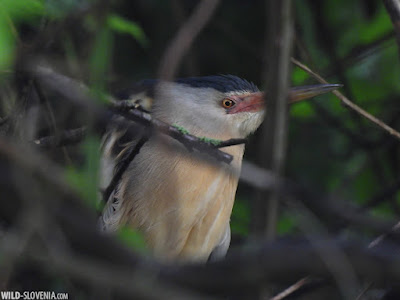 |
| Little Bittern Ixobrychus minutus, Škocjanski zatok NR, May. |
 |
| Woodchat Shrike Lanius senator, Škocjanski zatok NR, April. |
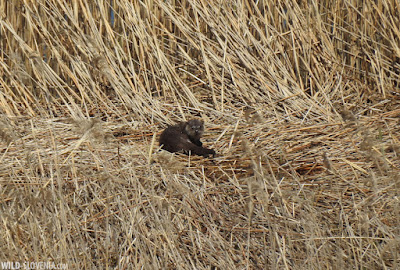 |
| Otter Lutra lutra, Cerkniško jezero, May. It's the 3rd time we see Otters at Cerkniško jezero in the middle of the day from one of the birding hides. This time they put on a great show for more than half an hour! |
Otters Lutra lutra, Cerkniško jezero, May.
 |
| Birding Cerkniško jezero (lake Cerknica) in May. |
 |
| A large Brown Bear Ursus arctos was around... Forests of Snežnik in May. |
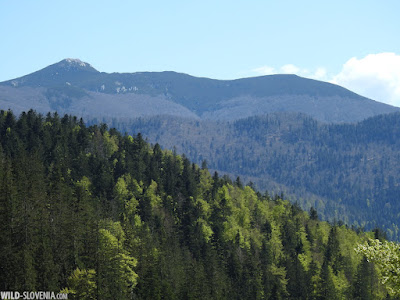 |
| Mt. Snežnik and the advancing greenery of the extensive Dinaric forests in May. |
 |
| Ural Owl Strix uralensis, mount Snežnik, May. |
 |
| Power nap with sunbathing in the Dinaric forest in May. |
 |
| Birding in an old-growth Dinaric forest on the Snežnik plateau in May. |
 |
| Heart-leaved Globe Daisy Globularia cordifolia, Karst, April. |
 |
| Karstic meadows in flower (with Green-winged Orchids Anacamptis morio) in late April. |
 |
| Whinchat Saxicola rubetra on a "foamy" Manna Ash Fraxinus ornus (amazingly abundant blooms of this species in the Karst this year), April. |
 |
| The first Red-backed Shrike Lanius collurio of the year in the Karst in early May. |
 |
| Middle Spotted Woodpecker Dendrocoptes medius (at nest entrance) Karst, May. A nest found by chance while doing a Forest Bird Index transect. |
 |
| Middle Spotted Woodpecker Dendrocoptes medius collecting insects from a wooden pole in the Brkini hills in May. |
 |
| Hay meadows, orchards and pastures in the Brkini hills, May. |
 |
| Poet's Narcissus Narcissus poeticus subsp. radiiflorus & Green-winged Orchid Anacamptis morio, Karst, May. |
 |
| Rock Thrush Monticola saxatilis, mount Nanos, May. |
 |
| Watching a Rock Thrush on the southern slopes of mount Nanos in May. |
 |
| Short-toed Eagle Circaetus gallicus with a snake, mount Nanos, May. |
 |
| Territorial interaction between two Short-toed Eagles Circaetus gallicus on mount Nanos, May. |
 |
| Horn-nosed Viper Vipera ammodytes, mount Nanos, May. I almost trod on this one! |
 |
| Foraging habitat of Short-toed Eagle on the Nanos' plateau. |
 |
| Snowy Mespilus Amelanchier ovalis, mount Nanos, May. |
 |
| Dorcadion arenarium (Cerambycidae), mount Nanos, May. And endangered and fastly declining longhorn beetle of dry grasslands. |
 |
| Elder-flowered Orchid Dactylorhiza sambucina, mount Nanos, May. |
 |
| Woodlark Lullula arborea, mount Nanos, May. |
 |
| My favourite place in the world - view from Nanos into the Vipava valley, the Karst and as far as the Adriatic. |
 |
| Fly Orchid Ophrys insectifera, Karst, May. |
 |
| Martagon Lily Lilium martagon, Škocjanske jame, May. |
 |
| In the Velika Dolina (collapse dolina) at Škocjanske jame, May. |
 |
| Honey Buzzard Pernis apivorus, Karst, May. |
 |
| Roe Deer Capreolus capreolus, Karst, June. |
 |
| Pygmy Cormorant Microcarbo pygmaeus, Škocjanski zatok NR, June. After the species' first breeding attempt last year (1st breeding for Slovenia) on the same tree, this year up to 11 pairs are nesting in a colony at the reserve. |
 |
| Little Tern Sternula albifrons, Škocjanski zatok NR, June. |
 |
| Common Tern Sterna hirundo, Škocjanski zatok NR, June. This year we counted a record number of 241 nests at the reserve. |
 |
| Breeding site of the last Ortolan Bunting Emberiza hortulana in Slovenia. In early June I enjoyed a singing bird right in this spot. Only 1-2 breeding pairs remain in the country. |
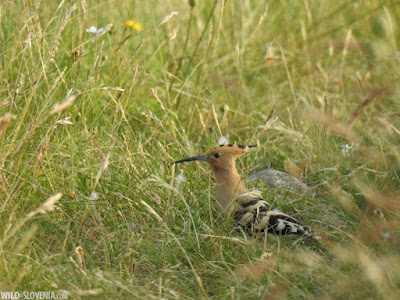 |
| Hoopoe Upupa epops, Karst edge, June. |
 |
| Marbled White Melanargia galathea on Centaurea rupestris, Karst edge, June. |
 |
| Steppe Grass Stipa eriocaulis & Rock Knapweed Centaurea rupestris, Karst edge, June. |
 |
| Short-toed Eagle Circaetus gallicus on the nest-tree, watched from a local road in the Karst, June. |
 |
| Turtle Dove Streptopelia turtur, Karst edge, June. |
 |
| Monitoring raptors in the Karst in June. |
 |
| Pyramidal Orchid Anacamptis pyramidalis, Karst edge, June. |
 |
| Short-toed Eagle Circaetus gallicus hunting on mount Vremščica in early June. |
 |
| Dry grasslands on mount Vremščica in late May/early June. |
 |
| Monitoring Short-toed Eagle on mount Vremščica in June. |
 |
| Griffon Vulture Gyps fulvus, mount Vremščica, June. |
 |
| Carniolan Lily Lilium carniolicum, mount Vremščica, June. |
 |
| Carniolan Lilies - behind the scenes. |
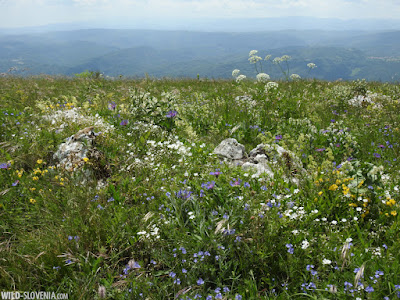 |
| Lush mountain meadow flora on mount Vremščica in June. |
 |
| Grass-leaved Iris Iris graminea, mount Vremščica, June. |
 |
| Up and down mt. Vremščica all days in June... in working time and not. |
 |
| Kojnik's Iris Iris sibirica subsp. erirrhiza, Snežnik's plateau, June. |
 |
| Our yearly appointment with the Lady's-slippers Cypripedium calceolus on the Snežnik plateau in early June. |
 |
| Finding wild and hidden corners of the Karst, while searching for Short-toed Eagle nests. |
 |
| Short-toed Eagle Circaetus gallicus feeding a Green Lizard Lacerta viridis to its chick, Karst, June. |
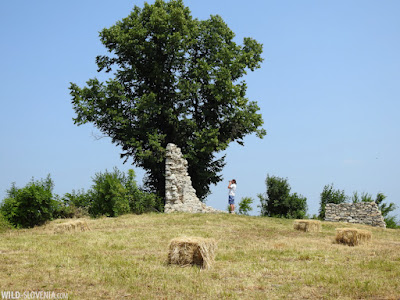 |
| Short-toed Eagle monitoring on the mystic hill, Karst, June. |
 |
| One of the many Short-toed Eagles Circaetus gallicus from our monitorings in the Karst in June. |
 |
| Golden Oriole Oriolus oriolus, Karst, June. |
 |
| Great Yellow Gentian Gentiana lutea subsp. symphyandra, mount Vremščica, June. |
 |
| Klasea (ex Serratula) lycopifolia, mount Vremščica, June. An endangered Natura 2000 species of dry grasslands, confined to the Karst. |
 |
| Purple-shot Copper Lycaena alciphron, mount Vremščica, June. |
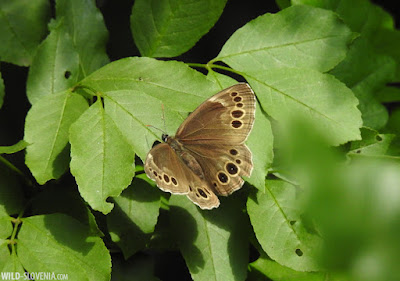 |
| Woodland Brown Lopinga achine, Karst, June. |
 |
| Chequered Blue Scolitantides orion, Karst, June. |
 |
| European Giant Steppe Grasshopper Prionotropis hystrix hystrix, Karst edge, June. |
 |
| Fasciated Conehead Mantis Empusa fasciata, Karst edge, June. In Slovenia a quite rare Mediterranean species, confined to the warmest areas in the SW part of the country. |
 |
| Woodlark Lullula arborea carrying a Praying Mantis Mantis religiosa for its chicks, Karst, June. |
 |
| Butterflying on mount Vremščica in late June. |


































































































